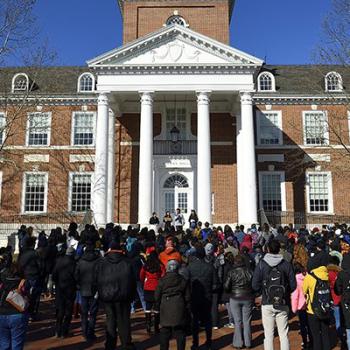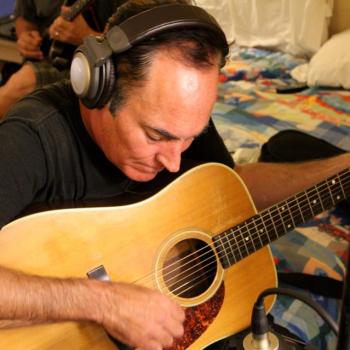Then too, as is more than obvious, the story revolves around the power of sympathetic magic. One can be saved from the fiery snake by "looking at the bronze fiery snake" on the pole; what may kill you can also give you life. In this case, it could well be that the ancients knew that the poison from a snake could kill, but an extract of that same poison can provide the antidote for the potentially deadly bite. It was hardly only we moderns who had learned to "milk" a rattlesnake in order to find the cure for its own bite.
And so how does that inform John's allegory of Jesus "being lifted up" in the same way that Moses lifted that bronze snake in the wilderness? At one level, Jesus, hanging on his cross of death becomes the way that we, doomed to die, may believe, "look on him," and gain eternal life. Raymond Brown spells out the implications of this reading very well: "The first step in (Jesus') ascent is when he is lifted up on the cross; the second step is when he is raised up from death; the final step is when he is lifted up to heaven" (146 in Brown's commentary The Gospel According to John). In other words, Jesus is "lifted up" to the cross, from death, and to heaven, and that "lifting up" is reminiscent of Moses' lifting up the saving pole of the bronze snake.
I readily admit to finding all this interesting in a historical sense; there is nothing more pleasurable than chasing around an obscure idea through an ocean of Middle Eastern texts and images. But can I preach this? Does this inform my modern faith? Perhaps there is more here than an allegorization of an old story of sympathetic magic. What of the notion that we can live more fully if we face squarely those things that can kill us? Are there ways that that which can kill can also give life? Facing my own demons, whose desire is for my death, may offer to me a fuller and richer life. Let me offer one example.
I know I have deep within me bigotries of countless kinds. I am sixty-eight years old, and was raised in a time of "legal" segregation of the races, both African-American and Latino/a in the Phoenix, Arizona of my youth. I first went to school with an African-American student when I was a senior in high school, age 17. I am astonished when I consider that, given the world I now inhabit. As a result of that history, I still have a deep fear and distrust of African-Americans. I am not at all proud of this fact, but I must face the truth of it. My wife was for three years one of the pastors of an African-American church; she and I were two of only five Anglo members of this 2000-member congregation. I was the only Anglo member of the male chorus. Did this cure my bigotry? It did not –at least not completely. It helped me, nudging me toward more openness, more willingness to see my fellow congregants as friends, rather than as completely different and thus strange, and unlike me. What I thought might kill me became for me the way toward my healing. But I have still much looking at the bronze serpent to do if I am to continue my healing. Does my story in any way resonate with yours?
I am grateful for this odd narrative; it has led me to a very different reflection than I thought it might. Old texts are sometimes like that. All the more reason to read the whole Bible, even the odd bits; God may still speak in ways you were not completely ready for.





